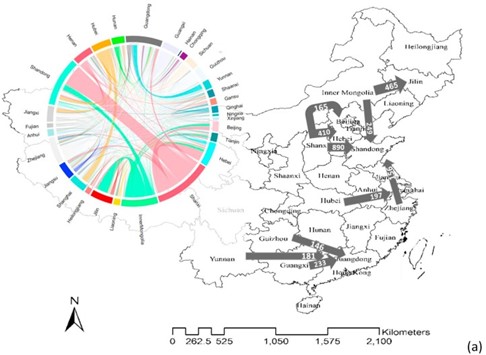
ABSTRACT
Water consumption in thermoelectric and hydropower plants in China increased from 1.6 and 6.1 billion m3, respectively, to 3.8 and 14.6 billion m3 from 2002 to 2010. Using the concept of virtual water, we attribute to different electricity users the total water consumption by the electric power sector. From 2002 to 2010, virtual water embodied in the final consumption of electricity (hereinafter referred to as VWEF) increased from 1.90 to 7.35 billion m3, whilst virtual water in electricity used by industries (hereinafter referred to as VWEI) increased from 5.82 to 11.13 billion m3. The inter-provincial virtual water trades as a result of spatial mismatch of electricity production and consumption are quantified. Nearly half (47.5% in 2010) of the physical water inputs into the power sector were virtually transferred across provincial boundaries in the form of virtual water embodied in the electricity produced, mainly from provinces in northeast, central and south China to those in east and north China. Until 2030, VWEF and VWEI are likely to increase from 5.27 and 14.89 billion m3 to 7.19 and 20.33 billion m3, respectively. Climate change mitigation and water conservation measures in the power sector may help to relieve the regional pressures on water resources imposed by the power sector.
KEYWORDS
Electric power; Water-energy nexus; Virtual water; Multi-regional input-output analysis
JCR CLASSIFICATION
Q1
Applied Energy
https://doi.org/10.1016/j.apenergy.2018.05.132
https://doi.org/10.1016/j.jclepro.2019.05.001
